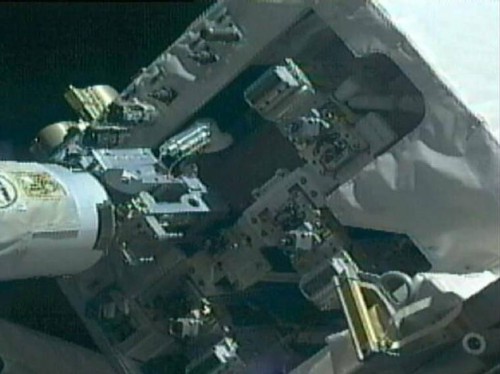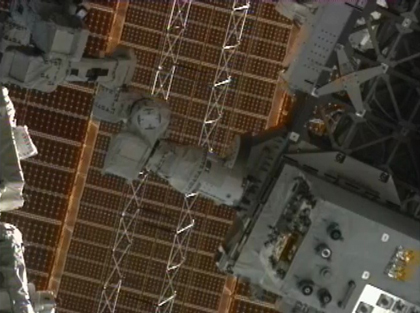
An experiment that flew up to the orbiting International Space Station in the final days of the space shuttle era is proving a once theoretical procedure is viable. The Robotic Refueling Mission, delivered to the space station in July 2011, has demonstrated that remotely refueling and repairing satellites is possible.
Current satellites were not designed to have their fuel tanks opened (on orbit no less) and to have those tanks “topped off” and then resealed. With NASA now proving that the procedure is possible, the potential savings could be in the billions, and the life spans of a wide range of spacecraft could be expanded far beyond their initial warranties.

“This achievement is a major step forward in servicing satellites,” said Frank Cepollina, associate director of the Satellite Servicing Capabilities Office at NASA’s Goddard Space Flight Center. “RRM gives NASA and the emerging commercial satellite servicing industry the confidence to robotically refuel, repair, and maintain satellites in both near and distant orbits—well beyond the reach of where humans can go today.”
Like so many things that NASA is working on these days, the RRM project is a collaborative effort with the Canadian Space Agency (CSA). It is the CSA’s Dextre robotic arm that has tested whether or not the process of refueling satellites in space is indeed possible.
Using a specially-designed pallet, Dextre and the Canadarm have performed remote refuelings of simulated “satellites” (with simulated fuel, naturally) that had been designed to emulate the process that would be conducted on the real thing. So how was this done? How did NASA and the CSA use the RRM pallet to test this theory?
On orbit, the simulated “satellite” had a number of valves, nozzles, and seals that are similar to what can be found on actual satellites. Four prototype tools were employed to open up those seals, transfer a simulated fuel, and then reseal the “tank.” The tools were affixed to the end of Dextre’s arm, and Dextre then performed the procedures that a robotic refuel and repair craft would conduct. According to NASA, the mission was a success.
This is just one of the most prominent technology demonstrators that NASA is working on. The RRM experiment was conducted by controllers on the ground at NASA’s Johnson Space Center in Houston, Texas.
[youtube_video]http://youtu.be/wjfoDC_6Qsg[/youtube_video]
Video courtesy of NASA
This new procedure could see a new age, one where spacecraft on orbit remain there for far longer than their predecessors have been able to. This would mean that fewer new satellites will need to be placed on orbit, and the cost to do so would diminish. Also, this should mean that the space environment will be less cluttered with defunct satellites.
With this first demonstration complete, future efforts will be conducted to prove that on-orbit repairs are also possible. The next series of experiments—slated to take place later this year—will include cutting thermal blankets as well as fastener and electronic termination cap removal.
The hundreds of geosynchronous satellites that stand to benefit from this include those that provide services such as weather forecasting as well as cellular and other communications services. NASA hopes that the RRM experiment will kick-start a new commercial industry, one which services and repairs satellites on orbit.
The RRM was launched to the International Space Station on board Space Shuttle Atlantis on STS-135—the last mission of the space shuttle era.




Yet another example of the genius of NASA engineers. EXCELLENT work more than worth every penny of taxpayer dollars spent. Unfortunately, robotic refueling is also an example of what we may lose if space technology funding is cut on the 1 March sequestration. Damn.